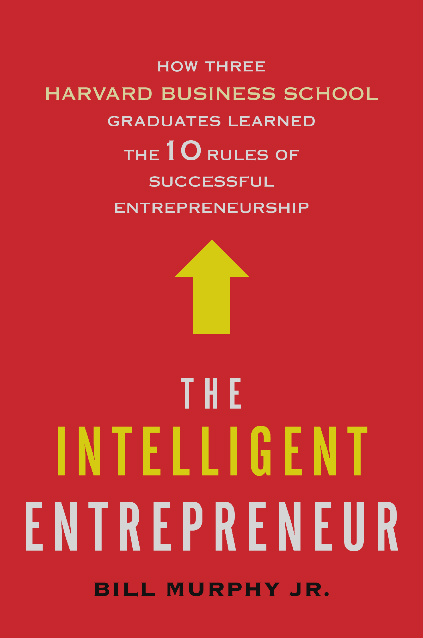My mind is buzzing with thoughts of a book I just finished reading: The Intelligent Entrepreneur by Bill Murphy Jr. The author follows the inspiring stories of three entrepreneurs who turn their backs on traditional careers after business school, launch businesses, and make millions.
 Murphy offers 10 rules to follow if you want to succeed as an entrepreneur. As much for me to remember as for you to get the goods quickly, here are the rules with my interpretations.
Murphy offers 10 rules to follow if you want to succeed as an entrepreneur. As much for me to remember as for you to get the goods quickly, here are the rules with my interpretations.
1. Make the commitment. You need to decide to be an entrepreneur and leave the traditional path behind. A good friend of mine, who has built a $400M company, once told me that choosing to be an entrepreneur, deciding to give up the seemingly safe employer-employee world, is like disengaging from the matrix. Once you have experienced reality, you never want to go back.
2. Find a problem, then solve it. There are two types of businesses—“pain” and “pleasure.” “Pain” businesses have a higher success rate because they address more urgent problems. Venture out to address a problem that is personal, that you care about, that you would love to solve.
3. Think big. You can never build what you cannot imagine, so to build a business that has big impact, you have to believe you can do it from the start. You come at the problem with a calm confidence. There is no reason to scream “we can do it!” because you just know it; it’s inevitable. Whatever is stopping you for really believing you can do what your business plan says you can do, dissect it, extract it, and throw it away.
4. You can’t do it alone. There are two types of people: big-idea people and get-it-done people. Very few of us can do both. Be honest with yourself, decide which type you are, then find (hire or partner with) someone who complements you.
5. You must do it alone. Entrepreneurial journeys are lonely. When I launched my consulting business I spent every day for three weeks alone at my computer, working an Excel database I had built of 300 prospective clients, sending 100 emails a day, trying to get my first project. Even after you’ve gotten your business going and have built a team, you will find yourself alone. Leadership, after all, is having no-one else to ask.
6. Manage risk. Most ventures fail because they run out of money. So never forget “DROOM”—Don’t Run Out of Money. Live by that motto. Calculate what you will need in the worst-case scenario and make sure you have enough. I do this every week now for my business, and I have not hit a cash crunch since.
7. Learn to lead. You will reach a point at which you must shift from managing to leading. This means setting a vision and communicating it. It means making promises (“we will get there”) and keeping them.
8. Learn to sell. This is my favorite. All innovators are sales people. They are selling every day—to investors, to employees, to suppliers, to customers. By convincing everyone that the iPod will change the world, Steve Jobs makes it so. Yet no business school I know of teaches sales! Study the sales process by reading books like SPIN Selling. Get practice by, for example, volunteering to raise funds for your favorite cause. But most importantly, find your passion. If you really believe your product and company and you share it passionately, you will become a magnet.
9. Persist. If you are willing to persist through the tough times, you have a much better chance of succeeding. Develop stubbornness.
10. Play the game for life. Don’t just do this for the money; do it to realize who you are, to create the life you are here to live. One of my favorite quotes from the book reads “Entrepreneurship . . . isn’t just about solving a problem, building a venture, managing risk, or making money. It’s about having a positive impact on the world, making the most of the gifts you’ve been given, and realizing your full potential as a human being.”
Kaihan Krippendorf (www.kaihan.net), a founding Fellow of the Center for Leadership and an adjunct professor in the College of Business Administration, is the author of Hide a Dagger Behind a Smile and The Way of Innovation. This article was originally written as an entry for his FastCompany.com blog “The Outthinker: Mavericks that Out Innovate the Competition.” The opinions expressed in this column are the writer’s and do not necessarily reflect the views or opinions of either FIU or the College of Business Administration.
View all articles by Kaihan Krippendorff.




